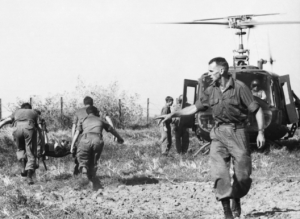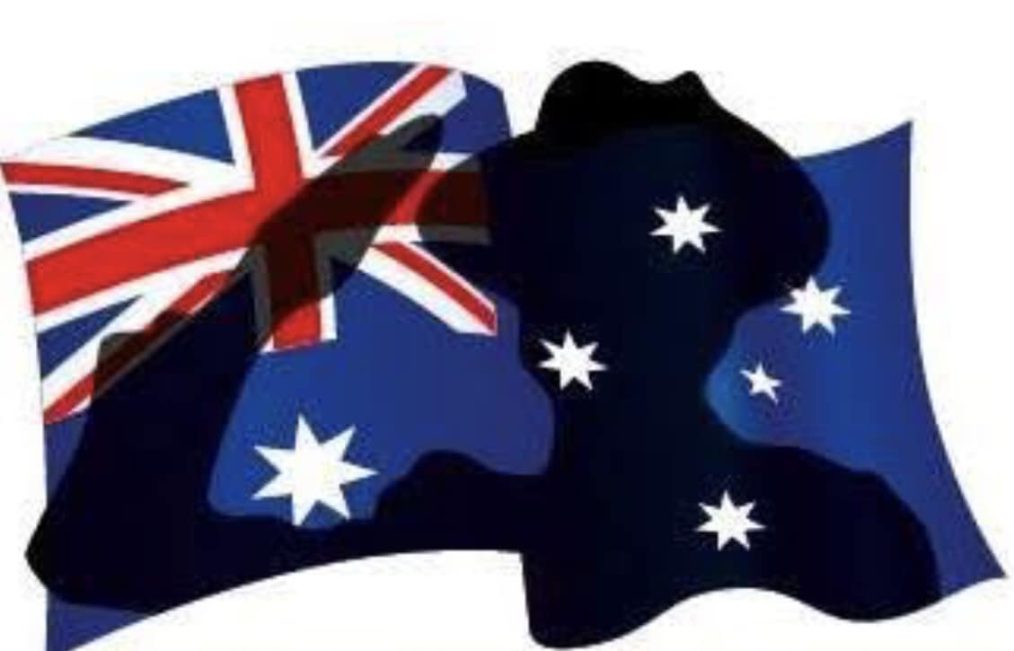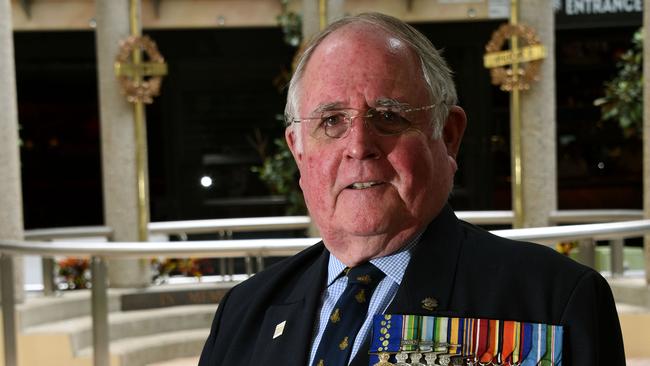In the latest that is coming in from the ongoing war between Russia and Ukraine, former russian president Dmitry Medvedev has warned of a potential nuclear attack on Ukraine. In a stern warning issued, he stated that any Ukrainian attacks on missile launch sites within Russia using weapons supplied by the United States could provoke such an attack.
In response to President Biden’s commitment to safeguard Red Sea shipping, the US executed an additional strike on Yemen’s Houthi rebels, targeting a radar site. The strike followed numerous American and British attacks on facilities of the Iran-backed group. The guided missile destroyer Carney deployed Tomahawk missiles to degrade the Houthis’ ability to target maritime vessels. The US and UK conducted airstrikes on the Yemeni capital, Sanaa, raising concerns about a broader regional conflict. Despite Houthi threats of retaliation, President Biden warned of more strikes if attacks on vessels persist in the vital waterway. Witnesses reported explosions at military bases, and the US military claimed success in reducing Houthi capabilities. The Pentagon stated that 60 targets across 28 sites were hit, while the Houthis vowed to persist in their attacks. Mohammed Ali al-Houthi, a Houthi leader, denounced the strikes as terrorism on Yemen.
51811 NORMAN HERBERT GOLDSPINK MBE
20 December 1927 – 9 January 2024
WO2 Norman Goldspink died at 2400 hours on Tuesday 9 January.
Norm enlisted in 1951, he deployed to Japan, Korea and Japan again, during 1952-54. He served with 1 RAR twice, in Korea and Australia. Norm was also posted to the Australian Military Mission in Washington, USA, in 1964. He joined 5 RAR in South Vietnam in January 1967, as CSM Charlie Company and later to take command of 4 Platoon, Bravo Company. He was then posted as CSM of 1 ARU, to complete his tour. Norm had many postings including RSM at the Royal Military College-Duntroon, Infantry Centre and Army Apprentices’ School. He retired in 1982 with the rank of Captain.
A Funeral Service for Norm will be held at Norwood Park Crematorium, 65 Sandford Rd, Mitchell, ACT, on Thursday 18 January at 1500 hours. Live Streaming link will be on the funeral home’s website at https://www.williamcolefunerals.com.au/
Regards,
Gary Townsend
5 RARA Membership Officer/Tiger Tales Editor garyt.5rar@gmail.com
When the shearing sheds are silent, and the stock camps fallen quiet
When the gidgee coals no longer glow across the outback night
And the bush is forced to hang a sign, ‘gone broke and won’t be back’
And spirits fear to find a way beyond the beaten track
When harvesters stand derelict upon the wind-swept plains
And brave hearts pin their hopes no more on chance of loving rains
When a hundred outback settlements are ghost towns overnight
When we’ve lost the drive and heart we had to once more see us right
When ‘Pioneer’ means a stereo and ‘Digger’ some backhoe
And the ‘Outback’ is behind the house. there’s nowhere else to go
And ‘Anzac’ is a biscuit brand and probably foreign owned
And education really means brainwashed and neatly cloned
When you have to bake a loaf of bread to make a decent crust
And our heritage once enshrined in gold is crumbling to dust
And old folk pay their camping fees on land for which they fought
And fishing is a great escape; this is until you’re caught
When you see our kids with Yankee caps and resentment in their eyes
And the soaring crime and hopeless hearts is no longer a surprise
When the name of RM Williams is a yuppie clothing brand
And not a product of our heritage that grew off the land
When offering a hand makes people think you’ll amputate
And two dogs’ meeting in the street is what you call a ‘Mate’
When ‘Political Correctness’ has replaced all common sense
When you’re forced to see it their way, there’s no sitting on the fence
Yes, one day you might find yourself an outcast in this land
Perhaps your heart will tell you then, ‘ I should have made a stand’
Just go and ask the farmers that should remove all doubt
Then join the swelling ranks who say, ‘ Don’t sell Australia out!’
Author credit- Chris Long
Far North Queensland
 There are soldiers, plus others who stand out from the crowd, then those few who might be deemed exceptional.
There are soldiers, plus others who stand out from the crowd, then those few who might be deemed exceptional.
They latter don’t need to be remarked upon for some single or multiple gallant behaviour, simply that they understand their tradecraft and, if entrusted with leadership responsibility know how to inspire their subordinates.
They instinctively understand the difference between example and compunction when compassionate understanding will often motivate rather than fear of punishment or rebuke.
All these characteristics are part of their leadership set, to ensure their subordinates have the prerequisite skills to perform what is asked or expected of them.
Some learn these skills through training and experience, an exceptional few have them in their genes.
CLICK LINK to continue reading
Australia Day holds immense significance for many Australians, symbolizing the nation’s rich history, cultural diversity, and shared identity. While retailers have the right to decide which products to sell, when their decisions are driven by political motivations, it introduces another layer of complexity. The celebration of Australia Day is deeply rooted in the majority of citizens, and for newcomers, it represents an acknowledgment and acceptance into the Australian community.
In response to corporate entities using their decisions as political statements, there is a grassroots approach that citizens can adopt to express their support for Australia Day. My proposed action is for individuals to unite and demonstrate their appreciation for the celebration by purchasing Australia Day merchandise from a retailer like Coles. This symbolic act not only signals support for the significance of Australia Day but also serves as a tangible way for people to engage in the conversation about the cultural and national importance of the day.
The call to wear Australia Day merchandise in other major retailers like Woolworths and Aldi could be seen as a peaceful and collective way for citizens to voice their disagreement with the political statements made by certain corporations. By doing so, individuals send a clear message that they value the traditional celebration of Australia Day and are choosing to express their views through their purchasing decisions.
This proposed action is a form of civic engagement, encouraging people to actively participate in the public discourse surrounding Australia Day. It harnesses the power of collective action to demonstrate the importance of the celebration and, in turn, highlights the impact of political statements made by corporations on the sentiments of the community.
In essence, the idea is not just about buying merchandise; it’s a symbolic act of unity and expression of shared values. It’s a way for citizens to assert their voice and demonstrate that Australia Day is a day worth celebrating and preserving for its cultural and historical significance.
By Ray Payne OAM
Brigadier Brett Chaloner, who commands the Army’s 13th Brigade, says we need to “prepare for the worse, hope for the best.”
I have been advised by Ross Eastgate of the death of Norm Goldspink on the 9th of January.
Norm died aged 96 in Canberra.
His wife Lois predeceased him and he is survived by his children and grandchildren, and thousands of fellow soldiers who remain ever grateful for having been privileged to have known and served with him.
Ross Eastgate has published an obituary in his column in the Townsville Bulletin, I will post it to Frontline Sunday morning.
Funeral details:
The funeral service for Norm will be held in the Chapel of Norwood Park Crematorium, Sandford Street Mitchell ACT on Thursday, 18th January 24, commencing at 3:00pm.
Please contact the Funeral Directors, William Cole Funerals for the livestream details on Canberra 6253 3655
LEST WE FORGET
The Australian Infantry Obstacle Course poses the question: will it beat you? Army physical training, especially infantry training worldwide, utilizes the obstacle course as a test of toughness, leadership, and teamwork for the simple reason that it works. You will go from a standing start to exhaustion in moments, and you will then spend the next however long feeling like you are in the last minute of a crucial football game. Knowing that if your section does not perform, you are doing it again. Infantry training doesn’t care about your feelings; it is designed to identify breaking points and test weaknesses of both body and mind. It aims to see who emerges as a leader under pressure, getting the team going, or the character that turns inward, becoming selfish and the weak link.
There is no hiding on the Infantry Obstacle Course at the School of Infantry. You will be watched the whole time, and you must succeed at every single hurdle, or you and the section will fail. You will be wet and weighed down with the equipment you wear into battle. This is the ultimate CrossFit test, and the secret ingredients are muscular endurance, mental and physical toughness, and mateship.
The Infantry Obstacle Course will expose weaknesses in men, and if you are only Kapooka fit, you will fail this course. Then, good luck looking your team in the eye when they get told to get ready to go through it again. You are tested as a section, not just as an individual, and we don’t care about your feelings. Every infantry soldier has done this before; now it’s your turn to prevail or fail. What you do to prepare determines your ability to pass.






